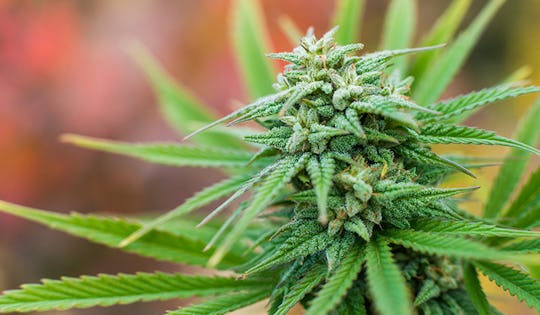Have you ever heard of the digestive system? The lymphatic system? How about the muscular and nervous systems? Of course you have. Science has been studying them for years, making breakthroughs in our understanding of their inner workings that have lead to advancements in ways we now take for granted.
How about the endocannabinoid system? Have you heard of that? If your profession has nothing to do with the biological sciences, I would expect the answer to be “no” (save a few individuals). Don’t feel bad. I have asked this question to many health and medical professionals that I have taught over the years and have received many a blank stare or look of confusion.
What if I were to tell you that this biological system permeates the entire human body with receptors located in skeletal muscle, the digestive tract, adipose (fat) tissue, and throughout the peripheral and central nervous systems (including the brain)? Again, you would question why this system is not studied, discussed, or even mentioned in most in physiology/health classes.
Benefits of the Endocannabinoid System
What if I were to tell you that the Endocannabinoid system (or ECS):
– Is involved in neuromodulation and immunomodulation in the immune system
– Helps regulate the central control of energy balance
– Plays a key role in the maintenance of bone mass
– Regulates intestinal motility
– Helps regulate metabolic processes (including storage)
– Promotes/regulates sleep
– Is involved in modulating insulin sensitivity
– Is involved in the regulation of pain signaling
– And much more
 In fact, Dr. Michael Beigel (Faculty of Medicine – The Hebrew University of Jerusalem) has said that the ECS is “involved in ALL physiological processes that have been investigated.”
In fact, Dr. Michael Beigel (Faculty of Medicine – The Hebrew University of Jerusalem) has said that the ECS is “involved in ALL physiological processes that have been investigated.”
Can I sneak in its possible involvement in cognitive function and creativity? Schafer and colleagues (2011) reviewed literature and concluded that its activation leads to connecting seemingly unrelated concepts, an aspect of divergent thinking considered primary to creative thinking.
At this point I assume you’re in disbelief. If the endocannabinoid system plays a vital role in physiological functioning and has the potential to treat such a wide variety of ailments and diseases, why has it received further attention or recognition?
It’s because the endocannabinoid system is stimulated by cannabinoids. That includes those that are produced by our bodies (endocannabinoids), and those released while smoking, or otherwise consuming Cannibis (exogenous cannabinoids – aka “Marijuana”.)
• ENDOCANNABINOIDS – cannabinoids produced by our bodies
• EXOCANNABINOIDS (Exogenous cannabinoids) – cannabinoids contained in the cannabis plant
Now I am not an Oncologist, nor an Internist for that matter. I am a manual therapist, physical conditioning, and sports specialist. As such, I am writing this to highlight what I know best – the involvement of this extensive bodily system in manual therapy and exercise as a result of being activated by the endogenous cannabinoids.
When treating patients for musculoskeletal conditions such as lower back pain, neck pain, headache, osteoarthritis, sports injuries, etc., using manual therapeutic approaches, two of the main goals are to reduce pain, and remodel soft tissue structures. In the scientific literature, much time and effort has been put forth in attempts to understand the mechanisms behind how treatment techniques can contribute to these goals.
We now have some understanding about the role of several bodily systems including the central nervous system, peripheral nervous system, endocrine system, and the myofascial system. What about the endocannabinoid? Can this system also contribute?
Preliminary research suggests that it can. As noted by McPartland et. al in 2005 and 2008, the effect of soft tissue manipulation on the ECS affects fibroblast remodeling (and hence soft tissue remodeling), dampens cartilage destruction (thus preserving joint health), diminishes nociception and pain, and even reduces inflammation in myofascial tissues.
This has been shown to occur specifically in subjects with chronic lower back pain following soft tissue therapy as per Degenhardt et al. (2007) who identified a significant alteration in the concentration of several circulatory pain biomarkers lasting for up to 5 days post-treatment.
Thus soft tissue therapy may act through the ECS to:
o Change tissue structure
o Preserve joint health
o Reduce inflammation
o Decrease pain
If physical manipulation by a manual medical practitioner can stimulate this important system, how about physical manipulation by way of movement and training? Does the ECS play a role in exercise? Research on this topic suggests that it does indeed.
Endocannabinoid System & Exercise
Exercise induces changes in mental status, pain levels, sedation, anxiolysis (anxiety levels), and a sense of wellbeing (Dietrich & McDaniel 2004). Many of these changes have been attributed to the “endorphin hypothesis” which was thought to, for example, produce the “runner’s high” (which I am sure many of you are familiar with).
However, research on the exercise-endorphin connection has produced equivocal results. One of the main issues is that endorphins are too large to cross the blood-brain barrier (meaning they are not ‘allowed’ to leave the blood and enter brain tissue to produce the effect).
In recent years, several prominent endorphin researchers including Dr. Huda Akil and Dr. Solomon Snyder, have publicly criticized the hypothesis noting that it is “poorly supported by scientific evidence” and that it is a “myth perpetuated by pop culture” (Kolata 2002).
What then is creating this effect? Recent findings show that exercise increases serum concentrations of endocannabinoids, suggesting a possible explanation for a number of these mental, and physical changes.
To begin with, there is a large body of scientific literature documenting that exercise suppresses pain, induces sedation, reduces stress, and elevates mood (Dietrich & McDaniel 2004). It can also induce ‘Flow states’ (Csikszentmihalyi 1996) whereby the participant becomes so immersed in the activity that they have an altered perception of space and time.
Similarly, a large body of evidence also demonstrates that the consumption of cannabis, or marijuana, produces almost identical effects including sedation, pain reduction, reduced anxiety, euphoria, enhanced sensory perception, a state of silent introspection, altered time perception and feelings of wellbeing.
This results from the fact that the psychoactive constituent of cannabis, Delta-9-tetrahydrocannabinol (THC) exhibits a high affinity for the CB1 receptor, which is densely expressed in brain regions implicated in the control of emotion and cognition (Glass et. al 1997).
Both endogenous and exogenous cannabinoids function by the same mechanisms. The brain’s receptors accept both. Exercise increases your body’s production of its own cannabinoids. Therefore theoretically the state that one claims to achieve during running, the “running high,” is equivalent to a mild plant cannabinoid induced high.
In addition to these mental changes, research also demonstrates the effect of ECS activation on creating various beneficial physical effects. For example, research looking at ECS stimulation has demonstrated its necessary involvement for the refinement of movements needed for coordinated locomotion (Steiner et. al 1999).
This stems from the fact that the highest concentration of the CB1 receptors in the brain are actually found in regions that control motor behavior and movement. This means that the majority of cannabinoid receptors are in the area of the brain that controls movement.
Further, activation of the ECS may also produce beneficial peripheral effects (effects outside of the brain/central nervous system) leading to other adaptive responses to exercise including vasodilation (increased blood vessel size allowing for increased blood flow), and enhanced respiratory function facilitating improved breathing during exercise (Hillard 2000, Calignano 2000).
Conclusion
As noted above, I wrote this simply to highlight the potential involvement of the endocannabinoid system in manual therapy, and its seemingly strong involvement on the mental and physical effects induced by exercise.
In so doing, I hope to spark the interest of those in my field so that continued efforts are made through research to further understand how the ECS mediates the effects of manual care and exercise, as well as to potentially learn how to better manipulate this system to benefit our patients/clients.
I am personally very interested in knowing if it is possible to activate the endocannabinoid system prior to exercise, or if it is possible to increase the responsiveness of the receptors. For example, could meditative practice do it? Those who achieve meditative states also describe incredibly similar experiences.
Perhaps meditation also acts on the ECS? I am also interested in the mechanism it plays in teaching movement tasks to my training clients. Further, as a manual therapist, I am interested to know more about how this system is involved in tissue healing and remolding, pain modulation, and neural rehabilitation.
At the moment, research on this topic is still in its infancy because of the difficulties involved in conducting studies including governmental regulations, as well as fear on the part of the researchers of being deemed ‘fringe.’
As social beliefs continue to change for the better, I hope that manual therapists and exercise specialists follow in the footsteps of oncologists and spend time learning about and understanding this often forgotten physiological system.
“True ignorance is not the absence of knowledge, but the refusal to acquire it.”
– Karl Popper




)





